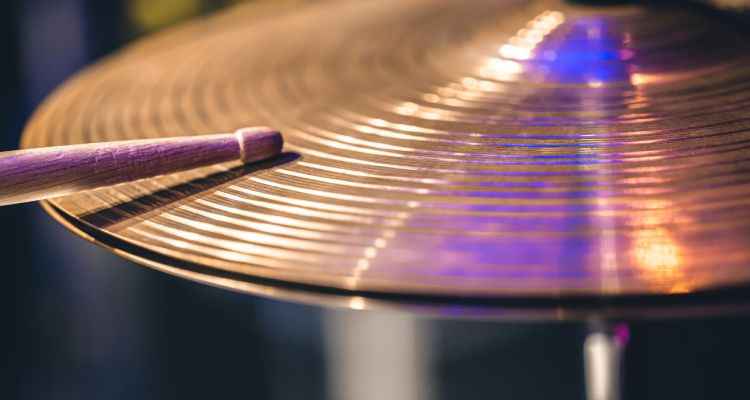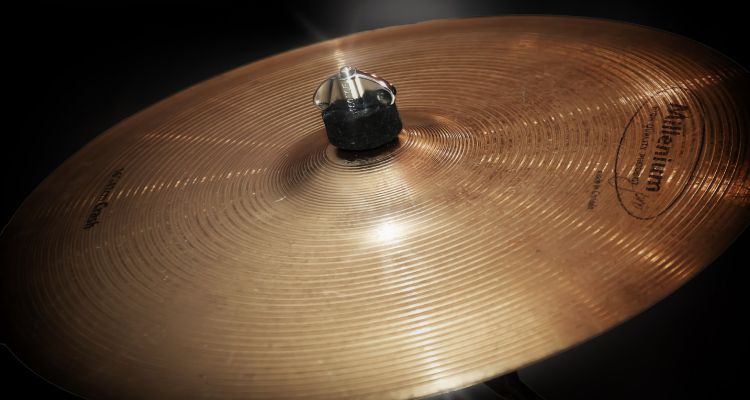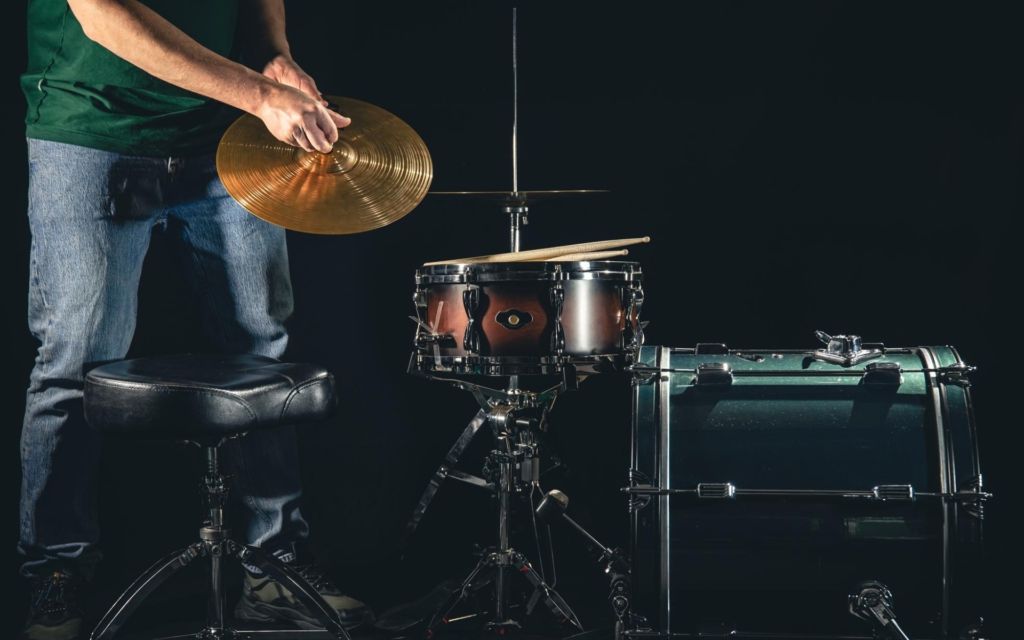Broken cymbals are something of a nightmare for drummers, but it’s something we all must deal with at one stage or another.
Some drummers break dozens of cymbals throughout their careers, while others are still playing the same set of cymbals they purchased decades ago.
Whether you’re in one camp or the other, it’s good to know what to do when you have a small crack or two.
Here’s a comprehensive list of all your options for what to do with broken cymbals, as well as a few tips to stop your cymbals from getting cracked.
Contents
What Causes Cracked Cymbals?

The most common reasons why cymbals crack include bad striking technique, hitting way too hard, and letting the cymbals touch the metal on the cymbals stands.
Cymbals can also damage and break when they are not kept securely in protective bags, especially while in transport.
The only one that isn’t preventable is that you got a faulty cymbal design from wherever you bought it from. You could have also bought a used cymbal from someone who didn’t take good care of it.
I’ll go a bit deeper into what you can do for each of those scenarios later in this article.
What to Do with Broken Cymbals
Repair
Fixing cracked cymbals sounds like the most logical thing to do, but it’s by far the trickiest method to pull off.
Cymbal crack repair requires the use of power tools, as those are the only tools strong enough to cut metal with. You need things like a cutting disc and a drill.
This will also only work with cracks that are near the edge of your cymbals. The easy fix would be to cut a bit of the cymbal off around the entire crack so that it looks like the cymbal has a bite out of it. If that cutout is neat, the cymbal should be fine for a long time.
If your cymbals have keyholes, you’ll need to drill holes and use grommets to keep the holes filled. You just need to make sure that there isn’t any metal-on-metal contact.
Recycle
Recycling cymbals is a fantastic way of doing your part for the environment. You may be tempted to just throw the cymbals in the trash and call it a day, but it would be better to dispose of them in places that recycle metals.
You should only take this route if you know you have no use for the cymbals anymore, as this is the only method that I’m mentioning that you won’t directly benefit from.
Use for Practice
If you don’t need to use your cymbals to play gigs or record anything, you can still use them in your drum kit setup. They’ll lose their quality of tone from the cracks, but they’re still perfectly playable.
A lot of drummers like to set up practice drum kits, and the cymbals on those kits are often cracked ones that they can’t use to perform with anymore.
You’ll need to see these cymbals more as “target practice” instead of cymbals that produce sweet tones.
It just depends on how badly they’re cracked. Some cracked cymbals are so bad that it’s actually a safety hazard to keep them set up at your drum kit.
Make a Stack

Creating stacks is the most popular thing that drummers do with cracked cymbals. A cymbal stack consists of a two or more cymbals sandwiched together to create a tight sound with a bit more resonance than hi-hats.
The beauty of cracked cymbals is that they don’t have any negative effect on stacked cymbal’s sound.
In fact, they’ll often add a bit of trashiness, which is usually what drummers want from effect cymbals.
If the crack in a cymbal looks very bad, you can just place that specific cymbal at the bottom and then stack other cymbals over it so that you don’t see the crack anymore.
Cleaning Cymbals
Something else that you may hear at some point is that keeping your cymbals clean will prevent cracks. That’s a bit of a divisive statement, as some drummers agree with it while others don’t.
Using cymbal cleaners on bright and brilliant cymbals is a good idea, but you shouldn’t use them on dark and unlathed cymbals. It’s better to just dust them off and wipe them down from time to time.
Sell Them
There are two aspects to selling old cymbals. On the one hand, you could sell them to drummers that are looking to create their own stacks.
You won’t be able to sell them for much, but a prospective drummer will be very happy to buy an inexpensive cymbal for their stack ideas.
On the other hand, you could sell the cracked cymbals to buyers that melt the metal down to create various things.
Cymbals are made from combinations of copper, brass, and tin, and those metals are somewhat valuable.
You can go directly to companies that do this sort of thing, or you could sell your cracked cymbals to a music store. A lot of music stores take those cymbals and get them melted down for a price.
Preventing Cracked Cymbals

Cracking cymbals is something that should only occur every now and then. If you break multiple cymbals over a short period, then there’s something wrong with the way you’re playing or the way you have your cymbals set up.
Here are deeper explanations on how to prevent cracks in your cymbals.
Positioning
The way you angle your cymbals has a big impact on how long they last. This also relates to how high or low you sit at your drum throne.
Essentially, you need to make sure that your cymbals are angled slightly down. They need to be in a position where you can’t strike them straight on the sharp edges.
You may see a few pro drummers, like Anika Nilles and Chris Coleman, angle their cymbals upward, but they’ve mastered the technique of striking those angles properly. The safest way for most of us is to have a slight downward angle.
Cymbal Felts and Sleeves
You need to ensure that your cymbals are resting on cymbal sleeves. Having metal-on-metal contact is the worst thing you can do for a cymbal, and it’s the quickest way to cause cymbal cracks.
You also need to have thick felts on the top and bottom of each cymbal. Those felts will allow the cymbals to move around without ever touching the metal on the cymbal stands.
When using cymbal toppers, you’ll also need to be sure not to over-tighten them. Cymbals should be allowed to flex and swing naturally after they are struck, instead of being choked.
Striking Technique
I mentioned earlier how hitting a cymbal straight on is a terrible idea, so here’s how you should be hitting your cymbals.
You should hit your cymbals in a crossing motion with glancing blows. Swipe across rather than hitting straight downwards!
That will allow them to vibrate and resonate as much as possible without your strikes putting stress on the metal. Think about hitting them at diagonal angles, and think about hitting through them instead of at them.
Here’s a brilliant video of Matt Halpern explaining this technique:
Hitting Hard
If you play live gigs and you need to hit cymbals hard to keep the energy up on stage, you just need to accept that cracks will eventually come.
Heavy drummers like Dave Grohl and Matt Cameron have lucrative endorsement deals where they just get new cymbals whenever they need them, so cracking them isn’t too big of a deal.
For those of us that need to buy our quality cymbals, just keep in mind that hitting them hard and fast comes with a price.
Conclusion
There are more things that you can do to prevent a cracked cymbal than things that you can’t, so you should always aim to keep your cymbals as pristine as possible.
There are countless cymbals still being used that were created in the early 20th century. Those are proof that cymbals can last ages without being cracked.
However, you still need to know what you can do with cracked cymbals, as those methods will either expand their life or benefit you in other ways. Also, make sure to inspect your cymbals, as a tiny crack can very quickly turn into a big one.









